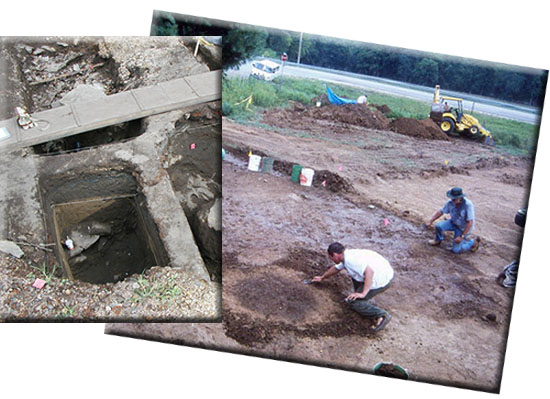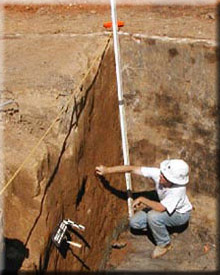
In most cases, it is possible to redesign a construction project to avoid adversely affecting significant archaeological sites or historic properties. However, on those rare occasions when avoidance is not feasible, it may be necessary to conduct a Phase 3 data recovery.
Data recoveries on archaeological sites generally include extensive controlled excavations. On historically significant standing structures and buildings, detailed drawing and measurements are made following HABS/HAER guidelines and standards. Because they are often labor intensive, Phase 3 data recoveries require careful planning and an explicit research design. In addition to artifact analysis, specialized laboratory work may include chronometric dating, zooarchaeological and paleobotanical identification, and soil analysis.
Weaver & Associates has completed several large-scale Phase 3 data recoveries. In Memphis, these projects include archaeological excavations in preparation for the New Memphis Arena and the Cobblestone Landing Riverwalk. Historical archaeology at the Hilderbrand Plantation produced a number of important findings, while data recovery at the Swan Creek site in Lewis County, Tennessee has contributed to our understanding of prehistoric cultures during the Archaic and Woodland periods.








